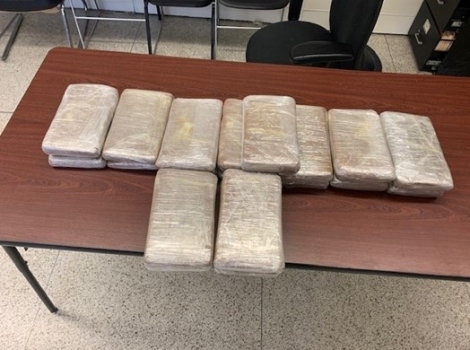
Governor Encourages New Yorkers to Keep Using the Tools to Protect Against and Treat COVID-19: Vaccines, Boosters, Testing and Treatment
69 Statewide Deaths Reported from November 11 to November 14
Governor Kathy Hochul today updated New Yorkers on the state's progress combating COVID-19.
"As families prepare to gather to celebrate the holidays, I urge New Yorkers to remain vigilant and use all available tools to keep themselves and loved ones in their communities safe and healthy," Governor Hochul said. "Be sure to stay up to date on vaccine doses, and test before gatherings or travel. If you test positive, talk to your doctor about potential treatment options."
Earlier this month, Governor Hochul launched a new public awareness campaign featuring New York State Health Commissioner Dr. Mary T. Bassett speaking directly to New Yorkers about three viruses - Respiratory Syncytial Virus (RSV), flu and COVID-19 - now circulating in the state with similar symptoms and the potential to cause serious illness. Produced by the New York State Department of Health, the videos include a short clip and a longer version geared toward parents; and a version aimed specifically at health care providers.
Governor Hochul continues to remind New Yorkers that children ages 5 and older may now receive the bivalent booster shots that are recommended to increase protection against COVID-19.
The Governor also urges New Yorkers to get their bivalent COVID-19 vaccine boosters. To schedule an appointment for a booster, New Yorkers should contact their local pharmacy, county health department, or healthcare provider; visit vaccines.gov; text their ZIP code to 438829, or call 1-800-232-0233 to find nearby locations.
In addition, Governor Hochul encourages New Yorkers to get their annual flu vaccine as flu season is widespread across New York State. The flu virus and the virus that causes COVID-19 are both circulating, so getting vaccinated against both is the best way to stay healthy and to avoid added stress to the health care system.
The State Department of Health is continuing its annual public education campaign, reminding adults and parents to get both flu and COVID-19 shots for themselves and children 6 months and older. Advertisements in both English and Spanish language began running last month.
For information about flu vaccine clinics, contact the local health department or visit vaccines.gov/find-vaccines/.
Today's data is summarized briefly below:
- Cases Per 100k - 16.02
- 7-Day Average Cases Per 100k - 18.77
- Test Results Reported - 40,564
- Total Positive - 3,131
- Percent Positive - 6.99%**
- 7-Day Average Percent Positive - 5.93%**
- Patient Hospitalization - 2,790 (+76)*
- Patients Newly Admitted - 1,302*
- Patients in ICU - 296 (+5)*
- Patients in ICU with Intubation - 103 (+8)*
- Total Discharges - 362,018 (+1,073) *
- New deaths reported by healthcare facilities through HERDS - 69*
- Total deaths reported by healthcare facilities through HERDS - 59,138*
** Due to the test reporting policy change by the federal Department of Health and Human Services (HHS) and several other factors, the most reliable metric to measure virus impact on a community is the case per 100,000 data -- not percent positivity.
The Health Electronic Response Data System is a NYS DOH data source that collects confirmed daily death data as reported by hospitals, nursing homes and adult care facilities only.
Important Note: Effective Monday, April 4, the federal Department of Health and Human Services (HHS) is no longer requiring testing facilities that use COVID-19 rapid antigen tests to report negative results. As a result, New York State's percent positive metric will be computed using only lab-reported PCR results. Positive antigen tests will still be reported to New York State and reporting of new daily cases and cases per 100k will continue to include both PCR and antigen tests. Due to this change and other factors, including changes in testing practices, the most reliable metric to measure virus impact on a community is the case per 100,000 data -- not percent positivity.
- Total deaths reported to and compiled by the CDC - 75,473
This daily COVID-19 provisional death certificate data reported by NYS DOH and NYC to the CDC includes those who died in any location, including hospitals, nursing homes, adult care facilities, at home, in hospice and other settings.
Each New York City borough's 7-day average percentage of positive test results reported over the last three days is as follows **:
Borough | Saturday, November 12, 2022 | Sunday, November 13, 2022 | Monday, November 14, 2022 |
Bronx | 6.73% | 6.68% | 6.75% |
Kings | 6.28% | 6.26% | 6.24% |
New York | 5.72% | 5.74% | 5.86% |
Queens | 6.84% | 6.92% | 6.91% |
Richmond | 5.36% | 5.43% | 5.68% |








